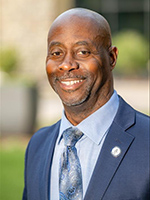Blog
Bridging the Gap in Rural Communities: A Call to Treat Addiction and Save Lives

National Addiction Treatment Week reminds us that addiction is a chronic, treatable disease and endeavors to end the stigma associated with addiction. It also serves as a call to action for those in the medical community to learn about and treat addiction. The critical need for quality addiction treatment is especially acute in rural communities, where residents experience particularly high rates of overdoses and where vulnerability to “diseases of despair,” like addiction, is compounded by travel burdens, health insurance gaps, and income challenges.1 There is an urgent need to address the troubling disparity in patients’ access to addiction treatment within these communities. To tackle this challenge, we must expand patients’ access to addiction prevention, treatment, harm reduction, and recovery support services – including and especially MAT (Medication for Addiction Treatment) – by eliminating barriers that thwart our efforts to save lives. All members of our country’s “patient medical care team” can make a difference by empowering themselves to approach addiction as the preventable and treatable, chronic medical disease it is, using evidence-based practices and working to end stigma related to addiction.
 Here are some common barriers to medication and other addiction treatment modalities that are exacerbated in rural areas:
Here are some common barriers to medication and other addiction treatment modalities that are exacerbated in rural areas:
- Lack of availability of medication treatment services – Limited healthcare infrastructure and a scarcity of resources prevent comprehensive, evidence-based addiction treatment. Medication treatment for addiction has proven effective and lifesaving. However, in rural communities, access to this vital treatment approach is out of reach for most. For example, rural residents are less likely to be administered naloxone during an opioid overdose in US emergency departments.2 Limited access to treatment is aggravated further by the travel burden that rural patients face as they seek prescribed medication and critical psychosocial support.
- Lack of practitioners and prescribers trained in addiction medicine – The lack of qualified healthcare professionals trained to treat addiction has contributed to the overdose epidemic. Multidisciplinary care teams are critical to addressing patients’ biopsychosocial needs. By leveraging educational opportunities and resources, we can better understand the science behind addiction and the treatment options that are available. By obtaining the qualifications to prescribe vital medication, we can save patients’ lives.
- Stigma – Addiction is not a result of a moral failing; it is a disease that can touch anyone. MAT, and particularly Medication for Opioid Use Disorder (MOUD) is not “substituting one drug for another.” It is an effective, evidence-based, essential component of an overall treatment approach for this multifaceted, complicated, treatable but (when not properly treated) potentially deadly chronic illness. It is our collective responsibility to ensure that no one feels isolated, ostracized, or judged because of their substance use. In every community, stigma towards people with substance use disorders and towards medication approaches to treatment poses a critical barrier to compassionate care. The misperception held by some members of the medical community that prescribing medication for the treatment of opioid use disorder is overly complex and challenging fortifies this barrier into an almost insurmountable wall. Until we end this stigma within the medical community, our patients will continue to suffer the consequences of insufficient resources and a lack of adequately trained practitioners. Medical professionals must lead the effort to break down this wall and foster an environment of understanding and support.
While these all-too-common challenges exist, members of the medical community can leverage our strength to make a difference in rural communities. We have well-established, effective, and safe approaches to treatment, such as FDA-approved medications proven to save lives. We also have a growing community of passionate practitioners and researchers who are dedicated to treating patients with addiction. These medical professionals are available to support their colleagues who are starting to learn about this complex disease and to guide policymakers seeking to improve the healthcare infrastructure. Finally, we have acquired a great deal of experience using telehealth. Let’s explore ways to use this resource to mitigate the distance that limits access to treatment for patients in rural areas.
I urge all members of the nation’s patient care team to take steps today to treat addiction and save lives:
- See your patients as individuals who are integral parts of families and communities and treat them using options that prioritize their safety and reflect evidence-based practices.
- Approach addiction as the chronic, preventable, and treatable medical disease it is.
- Empower yourself to treat addiction. Learn more about the science behind addiction and obtain the qualifications to prescribe vital medications.
- Share what you learn from your experiences to educate other medical professionals.
Addressing the disparity in addiction treatment access requires the action of everyone in the medical community. Through these efforts, we can drive lasting change, expand access to comprehensive addiction treatment, and create a culture of compassion. Let’s bridge the gap in addiction treatment access and ensure our care reaches every corner of our communities.
Sincerely,
Stephen M. Taylor, MD, MPH, DFAPA, DFASAM
President-Elect, American Society of Addiction Medicine (ASAM)
References
1. Jamey J. Lister, Addie Weaver, Jennifer D. Ellis, Joseph A. Himle & David M. Ledgerwood (2020) A systematic review of rural-specific barriers to medication treatment for opioid use disorder in the United States, The American Journal of Drug and Alcohol Abuse, 46:3, 273-288, DOI: 10.1080/00952990.2019.1694536
2. Frank JW, Levy C, Calcaterra SL, Hoppe JA, Binswanger IA. Naloxone administration in US emergency departments, 2000–2011. J Med Toxicol. 2016;12:148–56. doi:10.1007/s13181-015-0525-5. [Crossref], [PubMed], [Web of Science ®], [Google Scholar]
